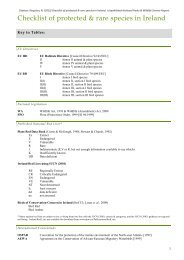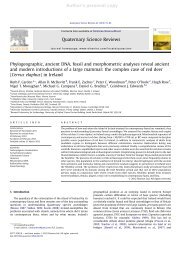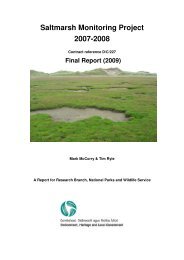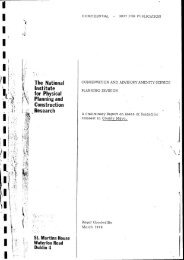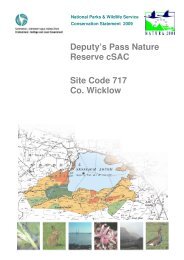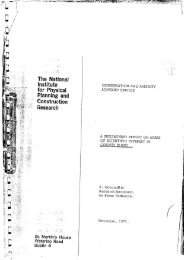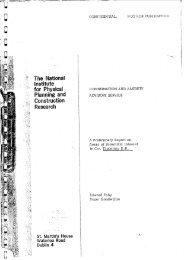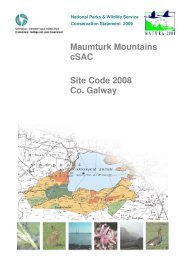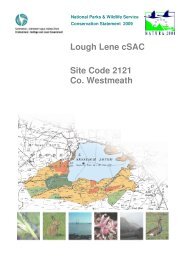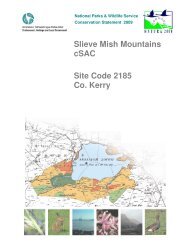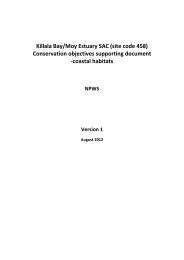The beetles of decaying wood in Ireland - National Parks & Wildlife ...
The beetles of decaying wood in Ireland - National Parks & Wildlife ...
The beetles of decaying wood in Ireland - National Parks & Wildlife ...
Create successful ePaper yourself
Turn your PDF publications into a flip-book with our unique Google optimized e-Paper software.
Saproxylic <strong>beetles</strong> <strong>of</strong> <strong>Ireland</strong><br />
____________________________<br />
<strong>The</strong> checklist <strong>of</strong> Irish saproxylic Coleoptera<br />
Structure <strong>of</strong> the checklist<br />
<strong>The</strong> checklist <strong>of</strong> species considered saproxylic is given <strong>in</strong> Appendix II. <strong>The</strong> list<strong>in</strong>g <strong>in</strong> this and the<br />
species accound section below follows the current taxonomic checklist order (Duff, 2008), with species<br />
name, proposed Irish status (see below), and a short account <strong>of</strong> its ecology. <strong>The</strong> records follow and are<br />
ordered by vice county, with locality name, grid reference (where readily available), recorders name,<br />
date <strong>of</strong> record, and source. <strong>The</strong> sequence is <strong>in</strong> date order, the earliest record first. Where a historic<br />
record is ambiguous to county then the record is placed <strong>in</strong> the most likely vice county.<br />
<strong>The</strong> Irish status <strong>in</strong> bold is provided as a start<strong>in</strong>g po<strong>in</strong>t, based on exist<strong>in</strong>g evidence, to stimulate<br />
thought and discussion. This is very likely to be modified as knowledge progresses. <strong>The</strong> expressions<br />
used are as follows:<br />
16<br />
Ext<strong>in</strong>ct (Ex) – no records s<strong>in</strong>ce about 1900<br />
Rare (R) – only a few modern records<br />
Scarce (Sc) – known from only about ten modern localities<br />
Uncommon (Un) – known from many counties, some with many records<br />
Widespread (Wi) – known from most counties and plenty <strong>of</strong> records; only the year <strong>of</strong> records<br />
are provided for the most widely recorded species<br />
Common & Widespread (Cm) – only VC distribution provided<br />
Established <strong>in</strong>troduction (Est) – species believed to have been brought <strong>in</strong>to <strong>Ireland</strong><br />
<strong>in</strong>cidentally through commerce; a few have first been found only very recently<br />
Casual Introduction (Ca) – an occasional record only, no established populations known<br />
Recent arrival (Re) – believed to have arrived naturally<br />
Doubtful (Do) – only a s<strong>in</strong>gle report but no evidence <strong>of</strong> a resident population<br />
Unclear (Ucl) – too little <strong>in</strong>formation for mean<strong>in</strong>gful assessment <strong>of</strong> status<br />
<strong>The</strong> recorder for all <strong>in</strong>dividual records is given, usually as an acronym to save space (see Appendix 1),<br />
followed by any literature references (usually bracketed). All records employed <strong>in</strong> this review (and



